TEN IMPORTANT GADGETS FOR YOUR ACQUARIUM
- Dec 07, 2021
- Arianna Rizzi
- 610 0 0
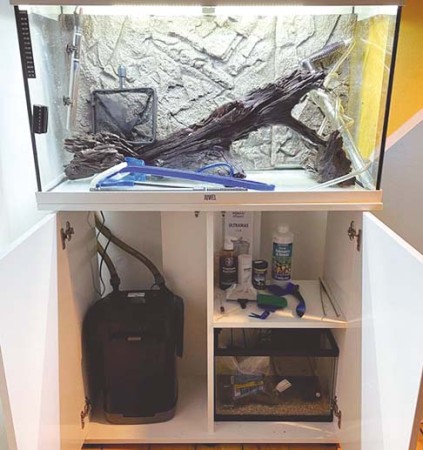
Everyone loves to play with gadgets, right? Aquariums have useful gadgets that you can use to make your hobby easier. Most gadgets are inexpensive and are available in most pet stores and on the Internet. Here are a few examples of what you can use on your aquarium keeping adventure.
Extendable Fish Nets
Fish come in a wide variety of different shapes and sizes. Therefore, aquarium manufacturers were kind enough to create nets to match the individual physical characteristics of whatever uncooperative aquatic friend you happen to be chasing around the tank.
If you buy one of those complete aquarium kits in a box, it will probably come with a small net. After enjoying your aquarium for a few months, you may begin to get the idea that one net just isn’t going to cut it. Owning one net is kind of like a fisherman who expects to catch everything with one size of hook. Aquarium nets aren’t expensive, so make sure to buy several sizes to suit the full-grown fish and baby fish (fry) in your system.
Extendable fish nets have a telescopic handle that allow you to reach different depths with the same net. This benefit keeps you from plunging your hands into taller tanks and gives you the option of easily catching fish in a variety of different sized tanks. I always try to buy lightweight nylon nets to avoid pulling on fish scales and models that have a hook or loop on the end so they can hang out to dry like the laundry I forgot about last week.
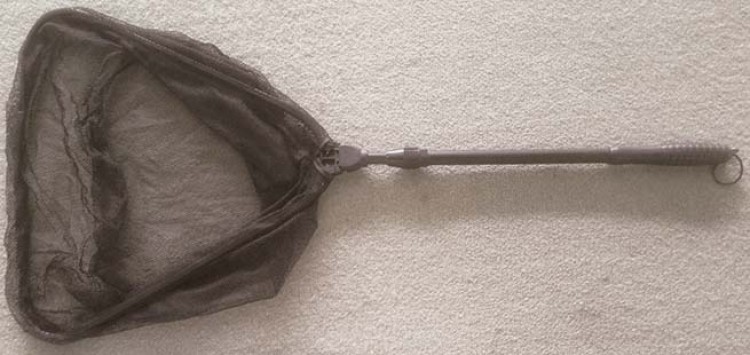
Handy Picker-Upper Doodads
An aquarium claw really isn’t as menacing as its name might imply. This little plastic claw (such as aquatic tongs) is a handy tool to use in the home aquarium. It makes moving tank decorations as simple as spending mega bucks at the fish store. A button on the end of the handle closes the claw around an object as you depress it. After moving the item, simply release the button to release the grip.
The long handle on this device allows you to reach almost any area of a standard sized aquarium without getting your hands wet. Keeping your hands (which may be covered in germs, dirt, or household chemicals) out of the tank whenever possible is always a good idea. Other good uses for this tool include inserting plants into substrate, grabbing unwanted objects from the tank (marbles, plant debris, and so on), and removing dead fish. At an average cost of less than 20 dollars, you really can’t go wrong with this marvelous little gadget.
Never use a claw to retrieve live fish from your aquarium because it can frighten them, injure them, and ruin their slime coat.
Algae Cleaners
One simple way to remove excess algae (the green, alien-looking glop that is blocking your view) from the aquarium glass is to use an algae scraper. Several types are available, including the following:
- Two-way magnet system: Magnetic scrapers are more practical, can easily reach more difficult areas, and are also more suitable for larger aquariums. A magnet attached to a scrubber goes on the inside of the tank and an exterior handle with a magnet draws it along the aquarium wall as you slowly move it. Just remember that any magnetic scraper that you buy will have a maximum glass thickness rating.
- Long stick with attached scrub pad/sponge: You simply slide up and down the interior glass.
- A glove type: It fits over your entire hand.
Stick and glove scrapers are good for small tanks, but they can disturb decorations, can be difficult to use, and can frighten fish to the point of having a stroke and going belly up.
Know the thickness of your aquarium walls so that you can purchase the correct scraper for your system if you use the magnet system.
Sponge and stick cleaners can be used on any type of tank. Algae gloves can be used on both as well. When it comes to blade and magnetic scrapers, not all products can be used on acrylic and/or glass so check the directions carefully if it uses blades. For example, the Flipper algae scraper has one blade for glass and one for acrylic that can be switched out depending on what type of tank you own. This product is also good for removing hard algae.
Although algae can be beneficial as a natural food source, an overgrowth can quickly turn your crystal-clear water into mushy pea soup. Allowing a small amount of green algae to remain on rocks and decorations is okay, but a tank that is excessively overrun with “the green terror” is unsightly at best.
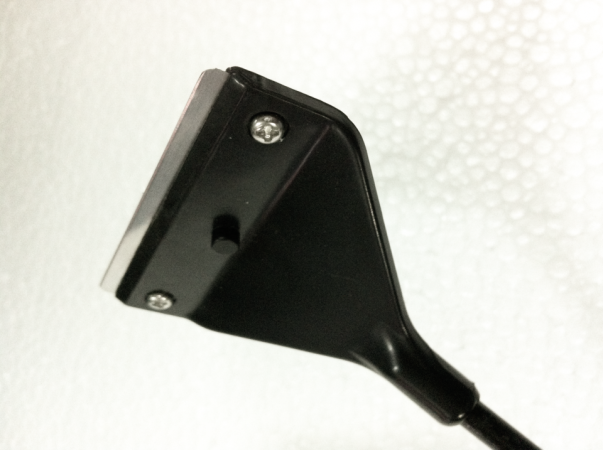
Aquascaping Tools
Aquascaping (also referred to gardenscaping) is a fun way to maintain a healthy aquarium system using live plants, rocks, and wood to create little aquatic worlds to escape to when your boss or annoying family members decide to come over and hang around. Aquascaping has few rules, and each tank can be decorated to suit individual tastes from natural landscapes to exotic temples. Aquarium plants can help to reduce algae, provide sanctuary and a natural habitat for your fish, and improve chemical filtration. See Chapters 5 and 16 for more good information on aquascaping.
In order to aquascape properly, these tools can help you get started:
- Long planting tweezers: For adding and removing plants, wood, and small rocks from a tank, doing small grooming jobs, and removing unwanted debris.
- Curved aquarium scissors: For pruning dead plant leaves and for trimming low grass type plants.
- A substrate spatula: It has a flat wedge on the end of a handle and is a great tool to gently move substrate back into place after your fish have decided to spit it all into one giant mountain in the middle of the tank.
I like to purchase stainless steels tools to avoid rusting. Make sure that you rinse your tools off and dry them before putting them away, and they’ll last a lifetime.
Light Timers
To keep your fish from feeling like the sun has suddenly decided to crash into the earth every morning when you turn on the lights, an automatic timer is a good item to control the lighting in your aquarium system. Light timers can provide a natural day and night cycle for your aquarium fish and can save you money if you forget to turn the tank lights off like me every once in a while.
These units can be set to turn on and off at specific times of the day and can even be programmed to be off on certain days if you want. Many units store your settings in case of a power failure that may occur when you turn your microwave and 30 other appliances on at the same time.
Another cool feature of many light timers is the ability to dim the lights in your tank to set the right ambience for spawning and to control algae.
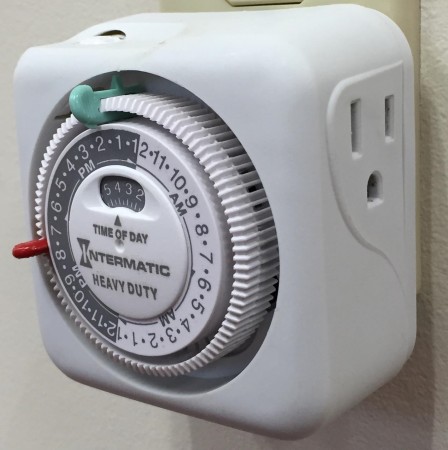
Tool Box for Storing Stuff
If you’re like me, your fish supplies are probably pretty well spread out along the entire length of the house, garage, and backyard. When your family starts complaining because they found fish food in the flour bin and air-line tubing in their underwear drawers, then it’s probably time to purchase a storage box.
A plastic tool container or tackle box works wonders for keeping aquarium equipment, fish food, chemicals, test kits, nets, and other supplies all in one neat little place. And you can carry it from tank to tank if you happen to have more than one aquarium. I prefer to buy waterproof plastic boxes that have removable trays on top. These trays can hold small items like thermometers and medications while I store the bulkier items underneath.
Depending on the supplies you have on hand, you may need to purchase more than one box. I like to have an extra box just to keep a variety of fish foods clean and dry.
Most retail chain and sporting goods stores have a good selection in stock.
Aquarium Sealer
If you wake up one morning and find that your living room floor resembles a kiddy pool, then chances are one of your aquariums may be leaking. No hobbyist should be without a tube of aquarium-safe silicone sealer in case this catastrophe strikes. Besides, aquarium sealer is cool and squishy and fun to apply.
Unfortunately, in order to repair a leak, you must first drain and dry the tank to allow the sealer to set properly. But in the long run, it’s also better to spend a couple of dollars on a tube of sealer instead of several hundred dollars on a new tank. Once in a while, factory sealer will fail due to age, weather conditions, and high or uneven water pressure. So, make sure that you’re always prepared. (Or buy extra flood insurance.)
Every product has its limits, and a huge crack in a tank wall won’t hold long under water pressure, even with the use of aquarium sealer. Only use sealer to repair pin leaks or to replace small spots of factory sealer that have been damaged or worn away.
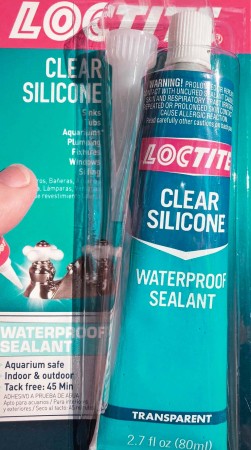
Automatic Gravel Cleaners
Many aquariums need electrical outlet space for one or two heater plugs, one or two light plugs, one to three air pump plugs, power filter or powerhead plugs, and more, depending on your setup. As you can see, an electrical setup can quickly outnumber your available wall plugs. A good multi-outlet plug or bar with a built-in circuit breaker can take care of this problem.
Aquarium gravel cleaners are a great way to keep the substrate in your aquarium clean. These cleaners pick up dirt and uneaten food in your tank (that can destroy your aquarium system balance as they start to decompose), and can reduce the strain on your aquarium filter at the same time. Keeping the environment clean helps to maintain consistent water chemistry by removing unwanted agents so that your fish aren’t swimming around in something that resembles the inside of a garbage disposal.
Suction tubes that you have to self-prime can be a bit of a hassle, so automatic cleaners can make the job easier for you. Electric and battery-operated vacuums are a cinch to start, can remove debris by trapping it in a filter without disturbing the substrate, and can also remove and replace tank water. I recommend vacuuming the substrate to remove debris at least once a week.
Digital Water Testing
Keeping track of the pH in your aquarium is an important aspect of maintaining healthy fish and plants. Aquarium species come from a large variety of different habits in the wild so they have different pH requirements to mimic their natural environment and to help keep them from becoming sickly.
Digital units to test pH come in an assortment of styles including compact designs that fit right into your pocket. Other units come in large-screen tablet form that can sit on an aquarium stand or hang on the wall. These units make it easy to monitor your water conditions on a daily basis.
Remember to never use your aquarium tools for other household chores because residual cleaning chemicals left in the bucket can kill your fish

Aquarium Smart Controllers
Controllers can take care of almost every aquarium need so that you can spend more quality time spying on your fish instead of constantly monkeying around with equipment until your hair becomes frazzled and your fish think that you’re the most annoying owner on the face of the planet. Two main types are available:
- Digital heat controllers are a cool way to keep your water temperature consistent. These units have an easy-to-read display and set the temperature when you plug your heater into them. Some models have dual time cycle settings that allow your fish and plants to have different temperatures depending on their needs so you don’t have to constantly fiddle with knobs and take contortionist classes in order to read the numbers found on standard units.
- Automatic feeders are another handy gadget that can dispense the right amount of food on a daily basis so you never have to worry about starving or overfeeding your fish to the point they’re floating around your tank like inflated balloons.
Keep your eyes peeled for new items that are constantly entering the market so you can spend more quality time watching your fish instead of wasting all your time messing around with outdated equipment






About author